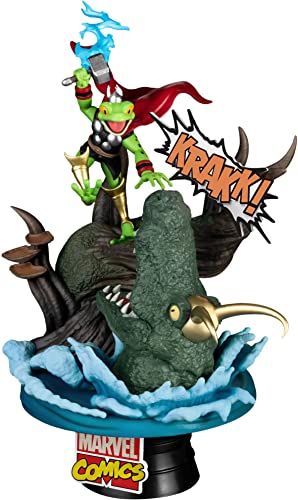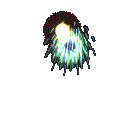I should probably clarify my statement..lol
Ouranosaurs are prob as dangerous as north american hadrosaurs...no bite, claws, ect.. but I didn't mean to say they were defenseless though. Bulk and herd behaviour def helps..and a kick from one prob could broken ribs, leg bones, ect..
An old, sick or juvenile, seems to me could have been easy prey for any carnivore of appropriate size. Fish may not have been available year round..maybe it was more like bears. Bears feast during salmon runs ..their claws make good fishing gear..but can also handle other prey items.
Herd defense aside, these creatures would likely have been bruisers even when taken alone. A large carnivore could certainly make a meal of it, but that's with carnivores specifically designed to dispatch healthy animals of that size. The young and infirm are the first targets for any carnivorous organism, not just piscivores which also live as opportunistic scavengers.
The example of North American Brown bears isn't appropriate, though. You have to keep in mind that those animals live in an environment with extensive periods of cold throughout the year which is inclement for most osteichthyan fish species, and all bulk-calorie load osteichthyans. Brown bears target salmon not just because they're there, but you have to take note of what they eat - most often the skin and eyes only when the fish are abundant, being that these are the most calorie-rich portions of the fish. Gharials, however, devour the entire fish. By far the most apropos example is the heron which also consumes the entire fish and shares a number of morphological and anatomical features with spinosaurids.
I'm not saying that spinosaurids weren't formidible and impressive. I'm simply stating a fact - they weren't built to withstand the stresses of struggling large prey organisms, and lack the tools to swiftly kill large animals with a minimum of damage to themselves. If you look at carnivores there is a relationship between their body plan and what they specialize in predating upon. Allosaurids and Tyrannosaurids were, quite simply, built to deliver devastating attacks to animals up to and even widely surpassing their own size. Spinosaurids couldn't cleave out a massive chunk of flesh and tear off a limb, quickly disabling a large herbivore and rendering it prone for the kill.
Spinosaurids could definitely kill the weak and infirm considering the minimal defense encountered, but even that would be a calculated risk for these animals.
Going back to the Brown bear and salmon analogy, bear claws can't be made comparable to spinosaurid claws. Spinosaurid claws are more akin to raptor talons, designed for spearing and anchoring. Bear claws vary widely from species to species depending upon the ecology of the bear. Black bears have claws suited for foraging and climbing, Polar bears have claws suitable for snaring and slicing flesh, and Brown bears have claws like shovels which could tear into meat with as much efficiency as they would dig for roots and suitable plant and insect life. Bear claws range from highly specialized (as seen in Polar bears) to the highly generalized (as seen in the Brown bear). Spinosaurid claws could be compared to extant raptors, not surprisingly, in numerous ways, and were very, very lethal. There's no disputing that. It's the claws in conjunction with the cranium, the neck, and the rest of the body plan which allow for us to hypothesize how these creatures would have fed. Also, keep in mind that a great number of spinosaurid species would have inhabited either coastal or wetland regions, wherein there would be a year-round abundance of aquatic prey.
If I had to place the role of most spinosaurids within a foodweb it would be as primarily piscivores, though opportunistic predators which scavenge regularly. Scavenging would have been an
extremely lucrative lifestyle for these large-bodied organisms which evolved a number of features to make themselves appear quite large.
I've seen fish that were no bigger than a couple feet that pulled people off their feet... Spinos would have had to have had some strength to hold and deal with struggling fish . What I have seen a lot of sculptors doing is putting Spinosaurs with huge fish like gar pikes..a fish of that size and temperment would not be an easy catch at all.
If presented with the opportunity and good fortune to grab a fish of that size, it would most certainly be a relatively routine catch and swift kill for an animal designed like a Spinosaurus. Gharials and herons are NOT by any means heavily built animals, but they can both catch and kill extremely large fish compared to their own body mass and devour it quite quickly. The reason people can be pulled off their feet is because they aren't catching those fish you spoke of with jaws of cone-like teeth or hands equipped with gaff-hook-like claws. Humans are not anatomically evolved for the express purpose of catching fish, as spinosaurids were indeed. The most common prey of S.aegypticus that I've seen in paleoart is the coelocanth, though the point being that the reason such enormous fish are presented is because they are being presented in conjunction with extremely large and heavy spinosaurids which require massive amounts of such flesh to subsist upon. These are multi-ton organisms which require meals dense in calories to support themselves. That means large fish. Even a number of shark species would not have been off the menu of coastal spinosaurids hunting within the surf.
If backed into a corner I like to think ole' Spiney could handle himself pretty well. An ambush or two on the same animal with those Freddy-like claws it would only have to wait for the prey to bleed to death. All of that takes into account the fact predators have very low success rates anyway.
Hey, I can tell you from experience that in the handling of domestic pets, one of the most dreaded dogs to come through the doors of veterinary clinics is the chihuahua. The smaller the dog, the bigger the attitude. Some of those little demons can make mean German Shepherds look like newborn kittens.

Again, the life of an ambush predator of terrestrial herbivores wasn't a plausibly lifestyle for the really enormous Spinos. They needed far too many calories to survive to make a living that way. 1.) They lacked the tools to quickly kill large terrestrial prey. 2.) They were far too large to regularly consume vast quantities of small, fleet-footed herbivorous dinosaurs, each providing a low calorie meal in comparison to the Spino's mass. For smaller spinosaurids like Baryonx, which were likely much faster than their larger cousins, pursuing small herbivores is a pretty good likelihood. I'd put the bigger blokes more in the scavenging range. When not waiting in a body of water for their meal, the big guys probably took whatever they could get, be in the corpse of some unlucky herbivore or a small dinosaur caught unawares. However they could fill their bellies without risking enormous damage to themselves.
Those kills success rates for predators are extremely low for animals we know have anatomically evolved to specialize in specific prey organisms. For spinosaurids to tackle animals they weren't built to kill the kill success rate would be even lower. These were generalists grabbing whatever meals they could get without risking overt damage to themselves. Their evolutionary success makes me think they weren't exactly starving their way throughout history.

...carnivores are creatures of oppertunity. So I can think of several scenerios were the oppertunity for a Spino to gulp down dino flesh in addition to it's normal diet fish is a possibility is all.
That sums it up well. They were opportunists which supplemented their piscivorous menu with whatever meat they could sink their claws or jaws into. Can't wait to see what the SS piece looks like!


















 2.) A JP T.rex maquette
2.) A JP T.rex maquette